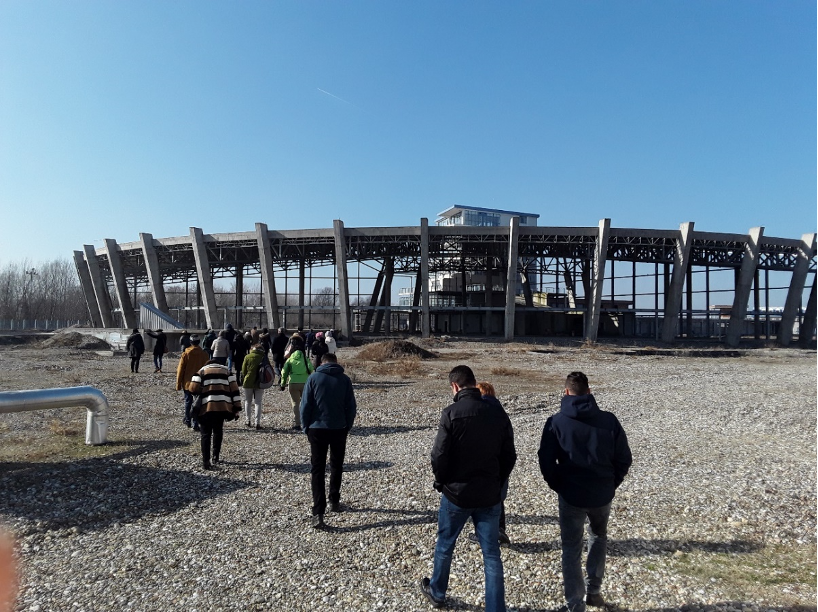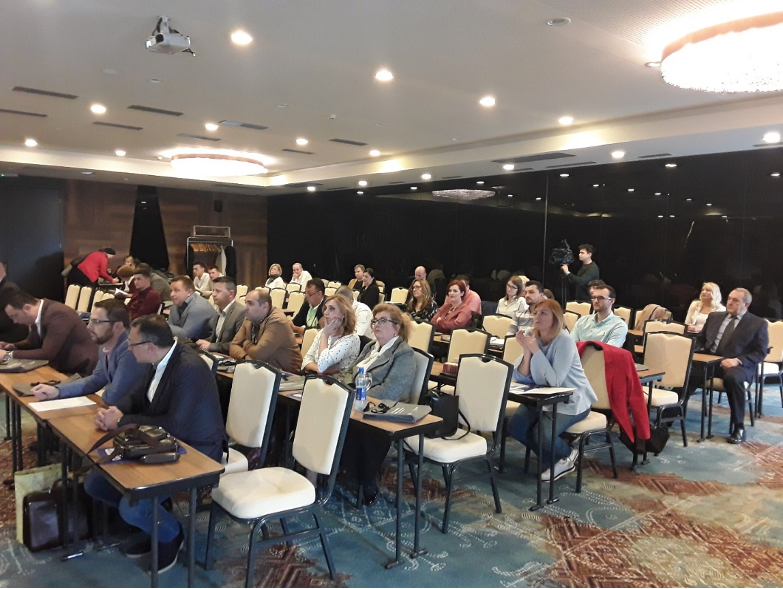Harnessing Earth's Heat: An Interview with Natalija Samardžić on Geothermal Energy Potential in the Danube Region
22-08-2023
The DARLINGe project aimed to thoroughly assess and analyze the geothermal energy potential in the southern part of the Pannonian Basin, which spans across six countries: Hungary, Slovenia, Croatia, Bosnia and Herzegovina, Serbia, and Romania. Through their research, the project discovered that the southern Pannonian Basin holds significant geothermal resources that can be harnessed for sustainable and energy-efficient purposes, including various possibilities for utilizing geothermal energy for heating. We spoke to Natalija Samardžić from the Geological Survey of the Federation of Bosnia and Herzegovina (FZZG), who worked on the project, about the potential of geothermal energy and facilitating its integration into the energy mix of the Danube Region countries and particularly in Bosnia and Herzegovina.
August 8, 2023
National promotional event of DARLINGe project in Bosnia and Herzegovina, 30 May 2019, Sarajevo.
1. How have the project results been used?
The exchange of knowledge and experiences among project partners, along with the active involvement of numerous stakeholders, has been a cornerstone of the DARLINGe project's success. It provided an opportunity for partners and stakeholders from Bosnia and Herzegovina to see good practice of using geothermal energy in six countries and to promote their geothermal potential in Europe and beyond. Additionally, the DARLINGe project focused on creating practical tools and methodologies to support the development and implementation of geothermal energy projects in the Danube Region. These tools aim to facilitate informed decision-making, risk management, and efficient utilization of geothermal resources. They are available as web applications on the Danube Region Geothermal Information Platform - DRGIP (www.darlinge.eu), providing accessible and user-friendly resources for geothermal stakeholders in the Danube Region, as well as contact person available to clarify data for their respective country.
The DARLINGe project focused on creating practical tools and methodologies to support the development and implementation of geothermal energy projects in the Danube Region.
2. Was the project's impact on policy making in Bosnia and Herzegovina as expected?
The creation of policies for geothermal energy in Bosnia and Herzegovina is still at a low level; geothermal energy is very poorly represented in energy strategic documents. Decision makers are interested in creating policy based on the results of the DARLINGe project, however, in Bosnia and Herzegovina there is a problem with the lack of people who deal with geothermal energy; there are only a few professional persons in the public sector, who, in addition to geothermal, also cover other parts of hydrogeology. In the private sector, there are also a small number of geothermal personnel. So, it can be concluded that the main problem for geothermal development is the lack of geothermal specialists. As a result, any inclusion of geothermal energy in national and regional strategies, plans and legislations goes very slowly, but it's happening.
3. Have the project results influenced policy decisions or led to any changes in the field?
Absolutely. The DARLINGe project played a crucial role in promoting geothermal energy and driving its integration into strategic documents and practical initiatives in Bosnia and Herzegovina. The project's efforts led to the start of three geothermal projects whose goal are establishing geothermal district heating systems in Sarajevo (Ilidža Project), Višegrad and Domaljevac. Also, the SWOT analysis of the regulatory framework for geothermal energy, which was presented at the promotional event of the DARLINGe project in Sarajevo, was an incentive for the authorities in the Federation of Bosnia and Herzegovina to regulate the use of geothermal energy through the Law on Renewable Energy Sources. The law is still in the draft, but it is expected to be adopted soon and provide better conditions and support mechanisms for the use of geothermal energy.
The DARLINGe project played a crucial role in promoting geothermal energy and driving its integration into strategic documents and practical initiatives in Bosnia and Herzegovina.
4. Was there any resistance or challenges in incorporating the project results into their work?
The decision makers, authorities, and stakeholders in the energy sector, as well as inhabitants of Bosnia and Herzegovina are aware of demand for cleaner sources of energy, replacing the traditionally used coal, and that is why they are very interested in renewable energy projects, such as the DARLINGe project. The cross-border visits to locations with successful implementations of geothermal energy practices were attended by numerous stakeholders. We discussed their needs, what could help them working on their tasks, and tried to provide answers through the project. The stakeholders have shown great interest in the project and wanted to hear and see examples in the neighboring countries. So, I want to thank the project partners for their support and very good cooperation.
The National promotional event held in Sarajevo on 30 May 2019 was a significant milestone for the DARLINGe project in Bosnia and Herzegovina. This event served as a platform to showcase the project's objectives, findings, and potential contributions to the transition towards geothermal energy. The presence of representatives from all levels of government in Bosnia and Herzegovina showed the importance attached to the promotion of geothermal energy and the willingness to explore innovative solutions for sustainable energy development.
5. How can future projects better support use of the results to drive positive change?
The added value of the DARLINGe project is that it prepared the ground for the development of other EU funded projects, which followed. The data and methodologies developed through this project were put in use in the GeoConnect3d project and the GSEU - Geological Service for Europe project. I am proud that my institution, the Geological Survey of Federation of Bosnia and Herzegovina (FZZG) participates in these projects.
The future EU projects in support of the development of geothermal in Bosnia and Herzegovina should be oriented towards raising awareness about the application of new methods and technologies in the exploration and use of geothermal energy, finding additional capacities of thermal waters and/or waters of higher temperature at the known locations as well as new geothermal reservoirs, shallow geothermal potential assessment projects, etc.
6. Who benefits from your project?
Researchers and companies dealing with the geothermal energy of the Pannonian basin in Europe and beyond can use the results of our project. As previously mentioned, the development of other EU funded projects, such as GeoConnect3d and GSEU, was based on the results of the project. The decision tree and risk mitigation tools are adapted to everyone who develops projects, as well as investors. I also recommend them to students, who practically through educational game gain knowledge about the development of geothermal projects, the necessary decisions and the possible risks. Decision makers, potential investors, users of geothermal energy and many other actors in the geothermal sector use or can use our tools and results.
Lastly, I recommend the interactive DRGIP web portal for anyone interested in learning about geothermal energy in the Pannonian Basin and exploring potential investment opportunities. You can find there regulatory framework and practical information like permit process flowcharts and contact details for relevant licensing institutions in the six project countries, including Bosnia and Herzegovina.

Visit of project partners to the geothermal energy user Slobomir, Bosnia and Herzegovina.
For more interviews with changemakers from the Danube region, go here.

